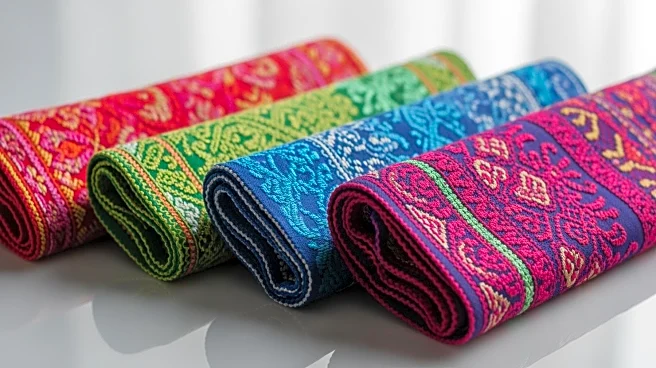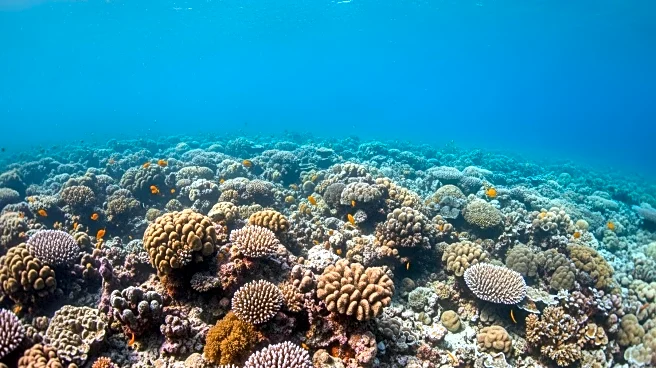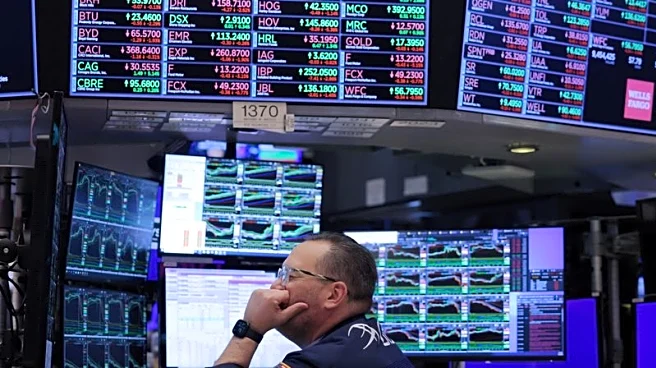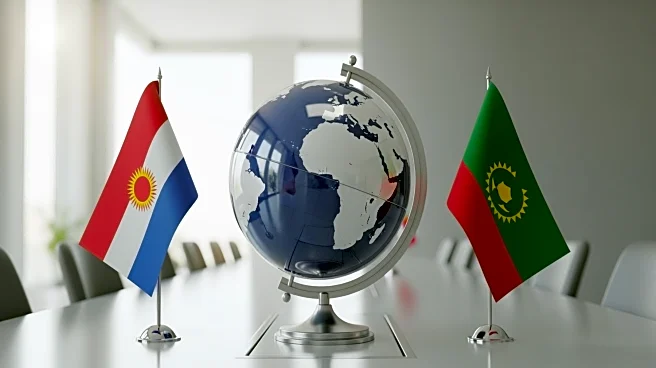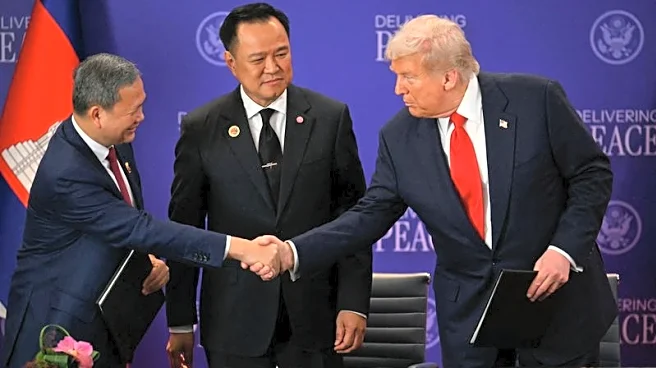What's Happening?
The Philippines has experienced a significant increase in apparel export prices, rising by 11% to $23.69 per kilogram in 2025. This surge is attributed to the country's focus on producing value-added garments
such as sportswear, uniforms, and functional apparel. Investments in automation, digital printing, and sustainable production practices have supported this shift. Despite the increase in export prices, the overall value of apparel exports from the Philippines has seen a contraction over the past two years, reflecting global demand weaknesses and tighter inventory management by Western retailers. Additionally, there is a continued shift in basic apparel sourcing to lower-cost producers in ASEAN and South Asia.
Why It's Important?
The rise in apparel export prices from the Philippines highlights a strategic shift towards higher-value products, which could enhance the country's competitive position in the global market. This development is significant for U.S. retailers and consumers, as it may influence sourcing decisions and pricing strategies. The contraction in export values suggests potential challenges for Philippine manufacturers in maintaining market share amid global economic pressures. U.S. businesses involved in apparel importation may need to adjust their supply chain strategies to accommodate these changes, potentially impacting pricing and availability of certain apparel products.
What's Next?
As the Philippines continues to invest in automation and sustainable practices, it may further solidify its position as a producer of high-value garments. U.S. retailers might explore diversifying their sourcing strategies to mitigate risks associated with price increases and supply chain disruptions. The ongoing shift to lower-cost producers in ASEAN and South Asia could lead to increased competition, prompting Philippine manufacturers to innovate and enhance their offerings. Stakeholders in the U.S. apparel industry will likely monitor these developments closely to adapt to changing market dynamics.
Beyond the Headlines
The focus on sustainable production practices in the Philippines aligns with global trends towards environmental responsibility in the fashion industry. This shift could have long-term implications for the industry's reputation and consumer preferences, potentially driving demand for eco-friendly products. Ethical considerations regarding labor practices and environmental impact may also influence U.S. retailers' sourcing decisions, as consumers increasingly prioritize sustainability.
